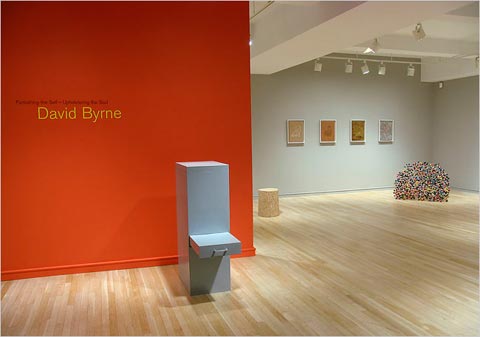
David Byrne not exhibiting photographs at Pace/MacGill, New York Times
I don’t know quite what to make of today’s New York Times article about photography galleries. Philip Gefter alerts us that traditional photo galleries are now occasionally showing other media. He writes:
It may not be a revolution, but it is a significant change in the gallery landscape. These are the places that helped to establish photography’s viability as an art form as well as to create a business model. Having proven their point, they are now at liberty to experiment.
When I came to New York in the late ’70s, photography was relegated to a group of galleries that exclusively exhibited photographic prints. The most prominent at the time was Light Gallery, which did much to elevate the status of photograhy in the art world. John Szarkowski at the Museum of Modern Art did even more by showing photographs in the context of the canon of 20th century art. MoMA’s photo galleries may have been separate, as they are now, but the prominent inclusion of photography in the museum signalled the arrival of the medium under the big top. Even so, the promiment art galleries in New York mostly showed photographs by artists known for other things. Warhol and Hockney are two obvious examples. I remember well when Jan Groover was exhibited at a mainstream art gallery on West Broadway back when the scene was still centered in Soho. This was a big deal to me because I saw her work as intrinsically photographic–4×5 still lifes of kitchen utensils–printed on conventional photo paper. She had broken through the photo/art Iron Curtain.
Eventually photography became an equal player, though as a print medium there are different market forces at work. The galleries–and the photographers–have tried to enhance the value of photographs by making them bigger or by creating work that pushes the envelope of what is thought of as conventional photography. Think Cindy Sherman or Andreas Gursky. But I think one of main reasons for the continued existence of separate photography galleries is that they cater to a different set of collectors. Nowadays there’s some overlap among the collectors, hence some overlap in the galleries as well. Will the boundaries blur further? Maybe, maybe not. Does it matter?
Anyway,the phenomenon is worth noting, I suppose, but I’d rather have read a perceptive article about Esko Mannikko’s exhibit at Yancey Ricardson. A photo of the gallery illustrates the NYT article and is captioned as photographs with a nonphotographic look. Mmm. And, by the way, the Times misspelled his name.